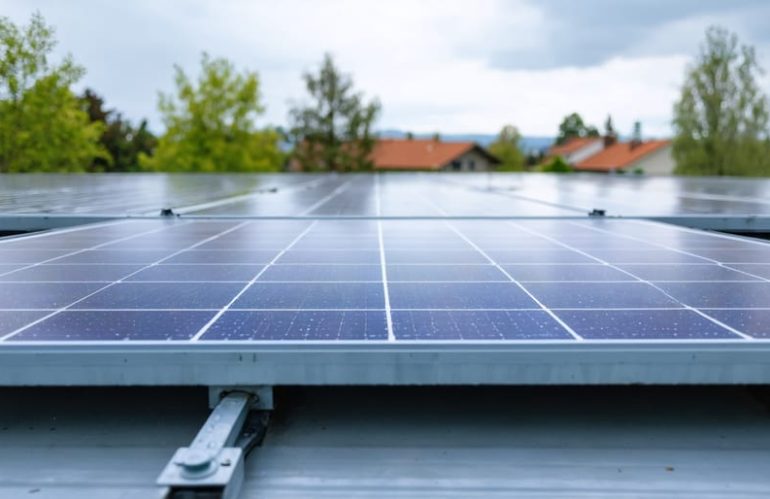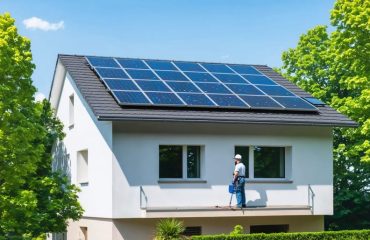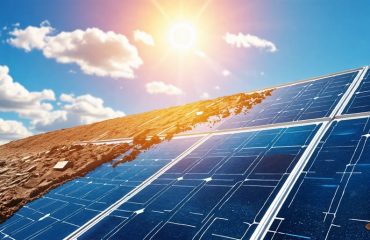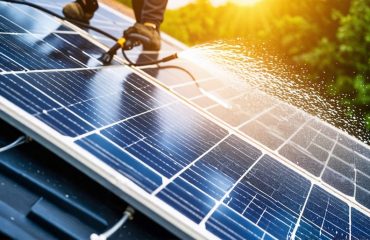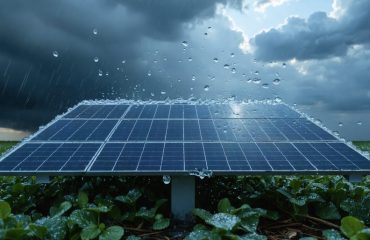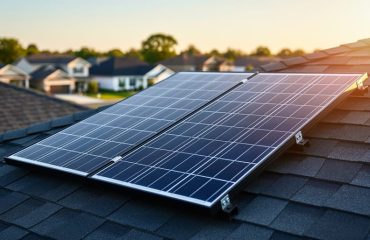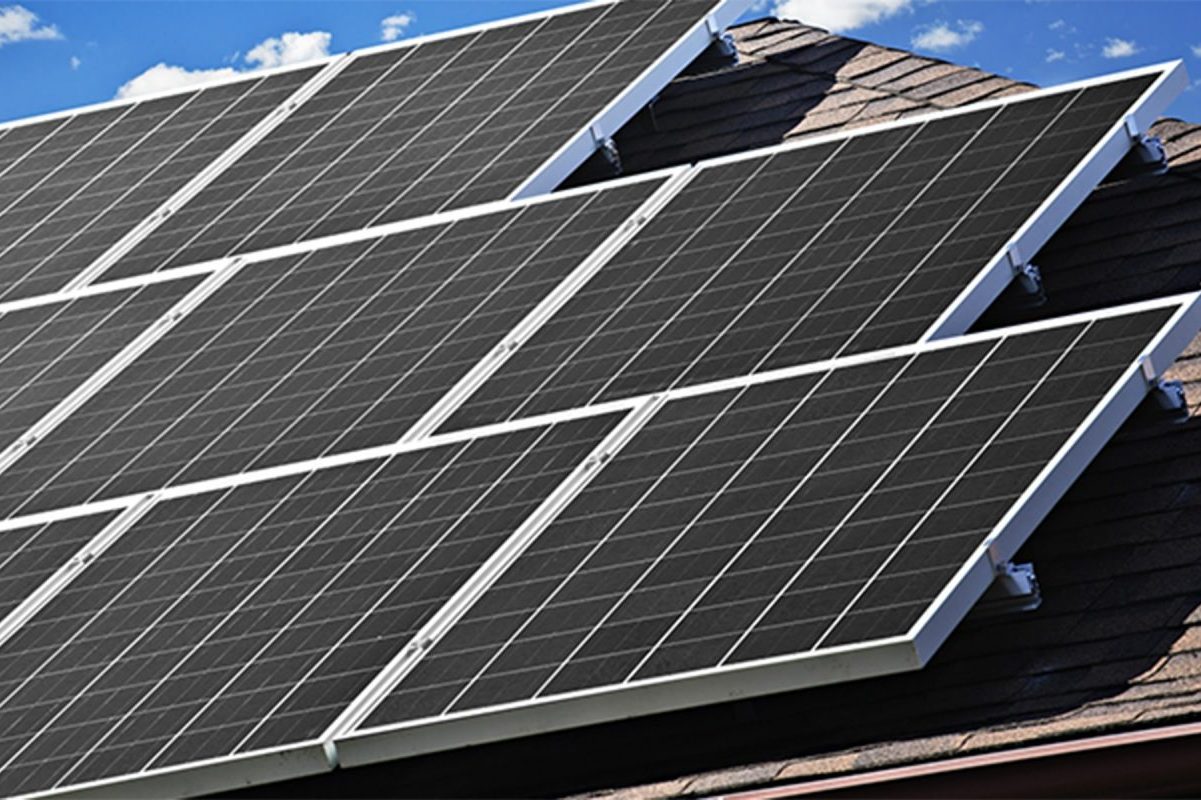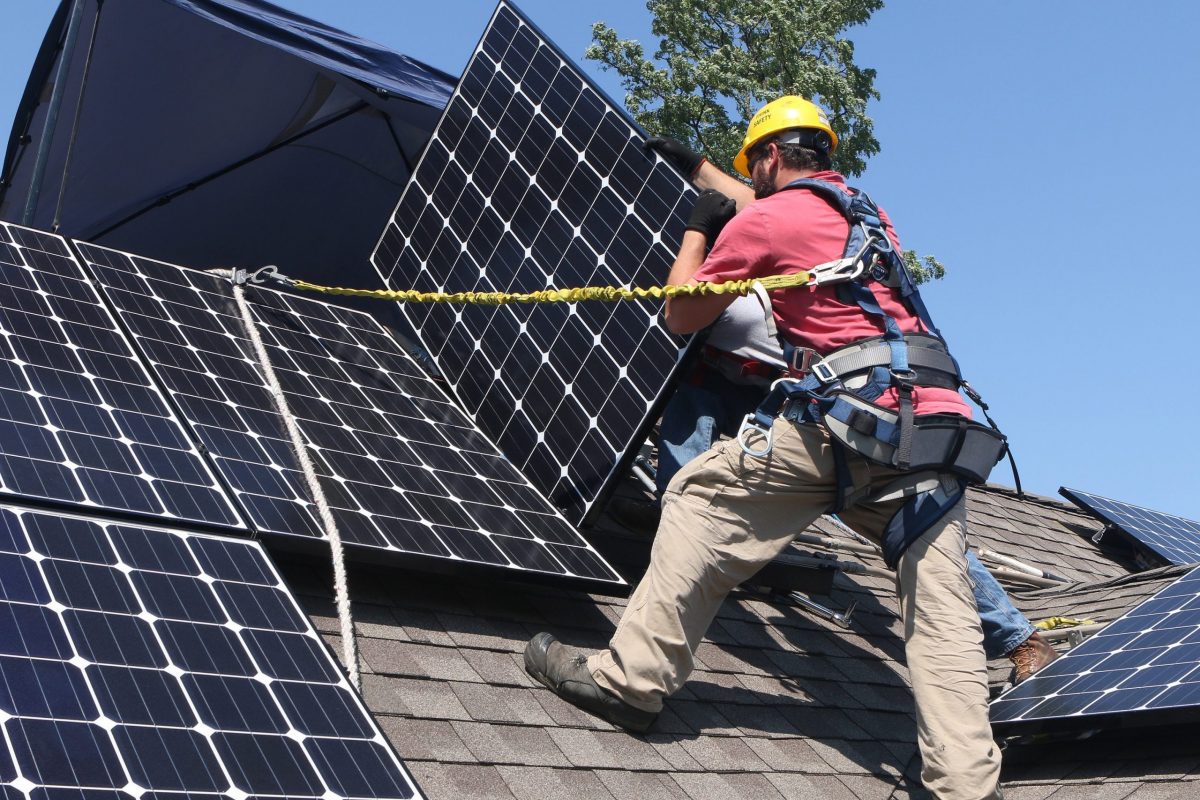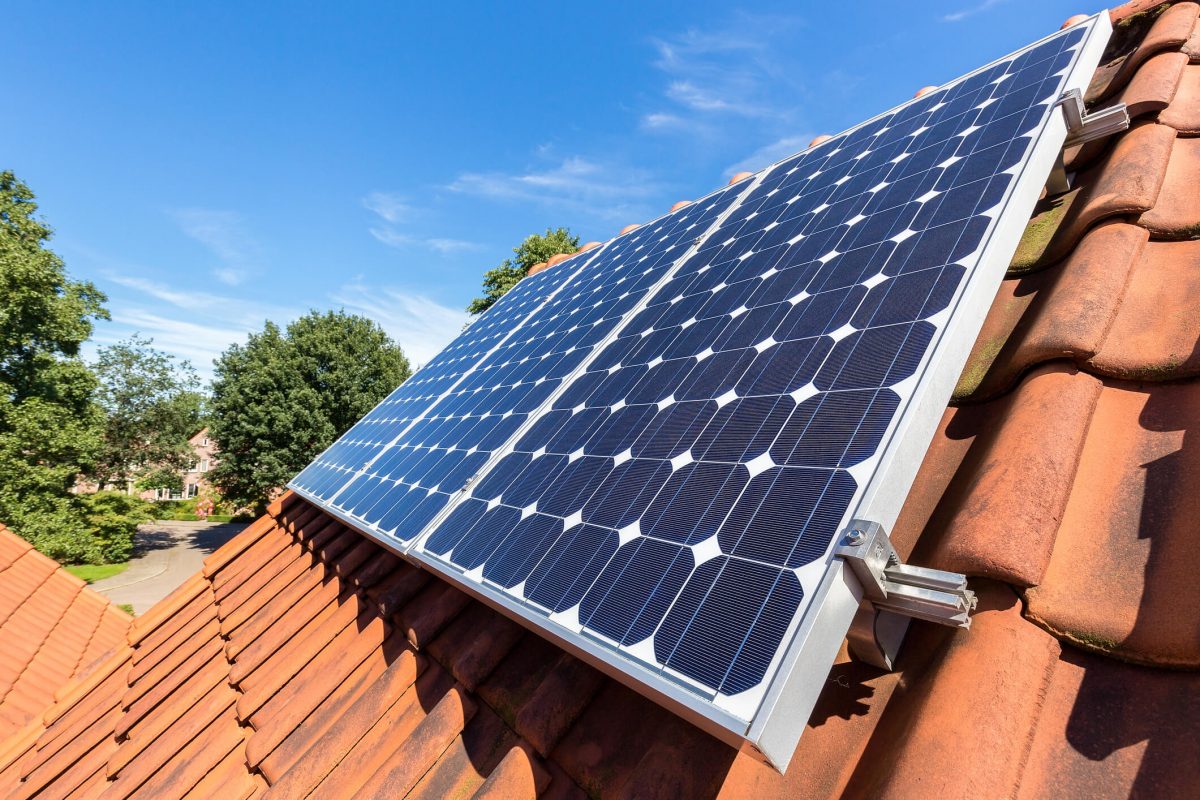Your solar panels lose up to 25% of their efficiency when they overheat—a hidden cost that directly impacts your energy savings and return on investment. Every degree above 77°F reduces panel output by approximately 0.5%, meaning those scorching summer days when you need power most are exactly when your system underperforms.
**Keep your panels cool and maximize your savings** by understanding that effective temperature management isn’t complicated or expensive. Most homeowners can implement simple passive cooling strategies immediately, while others benefit from understanding when active solutions make financial sense.
The good news? You don’t need to become a solar engineer or invest in complex equipment to maintain optimal panel temperatures. Strategic positioning during installation, regular cleaning schedules, and basic airflow awareness solve most cooling challenges. For existing installations, simple adjustments often deliver significant performance improvements without professional help.
**Common myths surrounding solar panel cooling** lead many homeowners to either ignore the issue entirely or waste money on unnecessary solutions. The reality sits comfortably in the middle: proactive temperature management pays for itself through improved energy production, but it doesn’t require constant monitoring or expensive interventions.
This guide breaks down proven cooling methods into practical categories—from zero-cost maintenance habits to professional upgrades worth considering. You’ll discover which approach matches your specific situation, climate, and budget, ensuring your solar investment delivers maximum returns for decades to come.
Why Your Solar Panels Get Hot (And Why It Matters)
Here’s a surprising fact: solar panels don’t love hot weather as much as you might think. While sunshine is essential for generating electricity, the heat that comes with it actually works against your panels’ performance.
Here’s what happens: when sunlight hits your solar panels, only about 20% of that energy converts into electricity. The rest? It turns into heat. As your panels absorb this heat throughout the day, their internal temperature can climb 30-40 degrees above the ambient air temperature. On a 95°F summer day, your panels could be running at 125-135°F!
This matters because solar panels are designed to perform best at around 77°F. For every degree above that optimal temperature, your panels lose roughly 0.5% of their efficiency. During peak summer heat, this translates to a 10-25% drop in power output compared to cooler conditions. That’s not a small difference—it’s the equivalent of losing one to three hours of peak sunlight every day.
Let’s talk real dollars. If your system typically saves you $150 monthly during summer, overheating could reduce those savings by $15-40 each month. Over a cooling season, that’s $45-120 left on the table simply because your panels are running too hot.
Many homeowners assume their solar investment will perform consistently year-round, believing panels “work fine in any weather.” While they certainly continue producing power in the heat, they’re not working at their full potential. Think of it like running a marathon in sweltering heat versus comfortable spring weather—you’ll finish either way, but your performance suffers when temperatures spike.
The good news? Understanding this relationship between heat and efficiency is the first step toward protecting your investment and maximizing your savings. Simple cooling strategies can help your panels maintain optimal performance, even during the hottest months.
Natural Cooling Methods That Work With Your Existing Setup
Proper Installation Spacing and Airflow
Good news: if your solar panels were installed by a qualified professional, they’re likely already set up for optimal cooling. The proper installation of solar panels naturally incorporates several cooling features that work passively to maintain ideal operating temperatures.
Your installer should have created a gap of at least 4-6 inches between your roof and the panels. This space acts like a natural chimney, allowing hot air to rise and escape while drawing cooler air from below. It’s a simple yet effective design that works 24/7 without any effort on your part.
The tilt angle of your panels serves double duty—it maximizes sun exposure while promoting airflow underneath. As air moves freely across and under the panels, heat dissipates naturally, keeping temperatures in check. This ventilation system is similar to how your home’s attic vents prevent heat buildup.
If your panels sit flat against your roof with minimal spacing, or if you’re planning an installation, it’s worth discussing these airflow principles with your installer. Proper spacing isn’t just about cooling—it also prevents moisture accumulation that could damage your roof over time.
Most homeowners don’t need to worry about this aspect after installation. The cooling benefits are built into the design from day one, quietly working to protect your investment and maintain peak efficiency without requiring your attention.
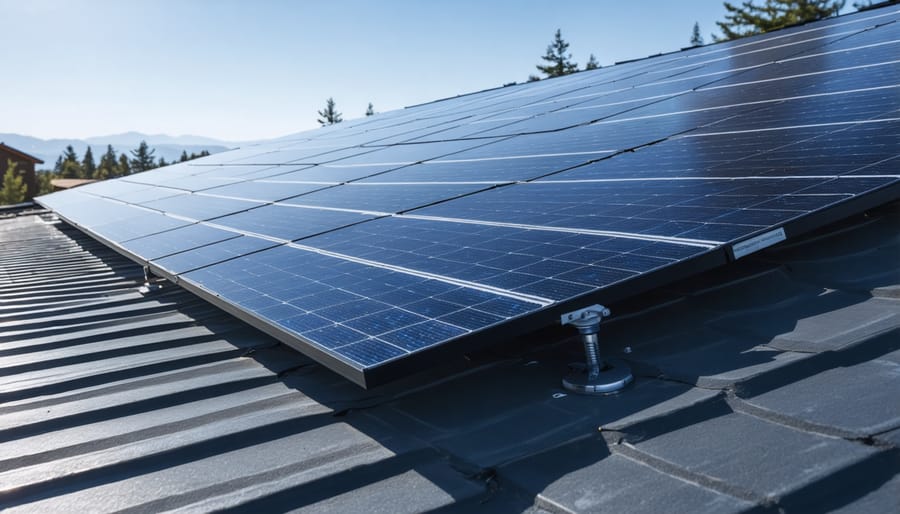
Strategic Landscaping and Shade Management
Your yard can be a surprising ally in keeping your panels cool—when planned thoughtfully. The key is creating shade strategically without blocking the sun your panels need to generate power.
Plant deciduous trees on the east and west sides of your property, not directly south of your panels. These trees provide natural cooling by lowering ambient temperatures around your home by up to 10°F during peak summer months, which indirectly benefits your panels. Just ensure branches never cast shadows on your solar array, as even partial shading drastically reduces output.
Ground-level landscaping matters too. Light-colored gravel, river rocks, or reflective mulch around your home’s perimeter can reduce heat radiation toward your roof by reflecting sunlight away rather than absorbing it. This is particularly effective if your panels are roof-mounted.
Monitor nearby vegetation growth regularly—a small shrub can become a shading problem within a few growing seasons. Trim back any plants that might eventually interfere with sun exposure, and remove overhanging branches that could drop debris onto panels.
This balanced approach protects your investment while maintaining optimal energy production year-round, saving you money without compromising efficiency.
Reflective Backing and Light-Colored Mounting
One of the simplest ways to keep your solar panels cooler doesn’t require any special equipment—just smart choices about what’s underneath them. Think of it like wearing a white shirt on a hot summer day instead of a black one. Light-colored materials naturally reflect heat rather than absorbing it, creating a cooler environment around your panels.
When installing panels on your roof, mounting them on light-colored surfaces or using reflective backing materials can reduce the temperature buildup underneath. This works because darker surfaces absorb heat and radiate it upward toward the panels, while lighter surfaces bounce that heat away. The difference might seem small, but even a few degrees cooler can translate to better energy production and a healthier return on your solar investment.
Many installers now use reflective mounting materials specifically designed for this purpose. If you’re planning an installation, ask about white or silver backing options. Already have panels? Consider painting exposed roof areas around them with reflective roof coating—a simple weekend project that can yield long-term benefits without ongoing costs or maintenance.
Active Cooling Solutions for Maximum Performance
Water Cooling Systems
Water cooling systems offer a more hands-on approach to keeping your panels performing at their best. These systems work by spraying or dripping water directly onto your solar panels, which evaporates and carries away heat—similar to how sweating cools your body on a hot day.
**Spray systems** use nozzles to mist panels periodically throughout the day, while **drip systems** release water more slowly along the top edge, letting it flow down the panel surface. Both methods can reduce panel temperatures by 20-30 degrees Fahrenheit, potentially boosting energy production by 10-15% during peak heat periods.
Here’s the reality check: water cooling systems require an upfront investment of $300-$1,500 depending on your array size, plus ongoing water costs. For most homeowners, this only makes financial sense in consistently hot climates (think Arizona or Nevada) where temperatures regularly exceed 95°F during peak sun hours. In moderate climates, the extra energy gained rarely justifies the water bills and installation costs.
Water usage is another consideration—you’ll typically use 0.5-1 gallon per panel per day during summer months. If you’re in a drought-prone area or have high water rates, this approach contradicts sustainable living principles.
The bottom line? Water cooling works best for large installations in extreme heat where the efficiency gains clearly outweigh the costs. For typical residential setups in moderate climates, simpler passive cooling methods deliver better value without the complexity or resource consumption.
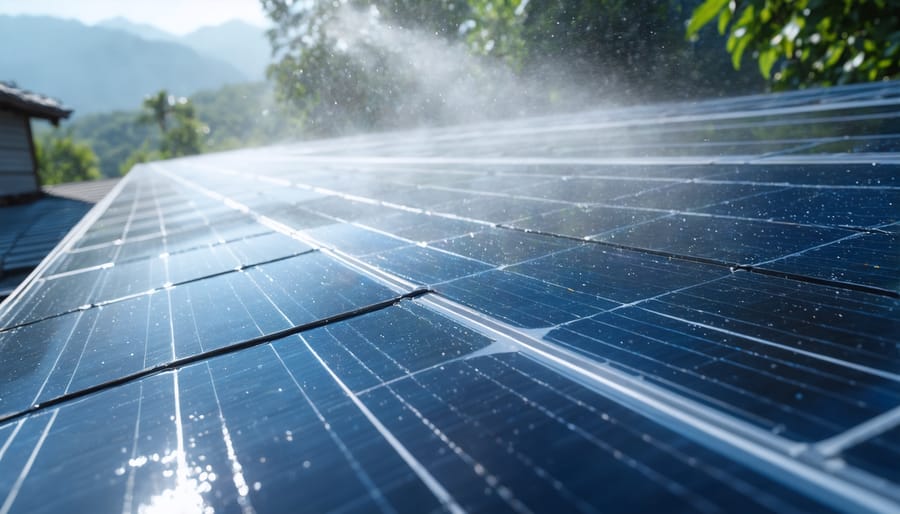
Fan-Based Ventilation
Solar-powered fans offer an elegant solution that uses your panels’ own energy to keep themselves cool—talk about working smarter, not harder! These systems attach small fans near your panels to create airflow underneath, preventing heat buildup without adding to your electricity bill.
The beauty of fan-based ventilation lies in its simplicity. Most homeowners can install basic systems themselves for $100-$300, making it one of the most budget-friendly active cooling methods available. The fans automatically run when the sun shines, so there’s zero maintenance hassle or programming required.
You’ll typically see two approaches: standalone solar-powered fans that mount directly to your array, or integrated systems that work with ground-mounted panels. Both create air circulation that can reduce panel temperatures by 10-15 degrees Fahrenheit, translating to noticeable efficiency improvements.
The financial math works beautifully here. A modest investment in fan-based cooling often pays for itself within two years through improved energy production. Plus, cooler panels experience less thermal stress, potentially extending their lifespan and protecting your long-term investment. For homeowners seeking practical cooling without complex installations, solar-powered fans deliver reliable results without the typical maintenance headaches.
Phase-Change Materials
Phase-change materials (PCMs) represent an exciting frontier in solar panel cooling technology. These innovative materials work by absorbing excess heat as they change from solid to liquid, much like ice melting in your drink keeps it cold. When applied to solar panels, PCMs naturally capture heat during the day and release it during cooler nighttime hours, helping maintain optimal panel temperatures without requiring pumps or electricity.
While PCMs are still emerging and not yet widely available for residential installations, early research shows promising efficiency gains of 5-15%. The technology is becoming more affordable as manufacturers scale up production. If you’re installing new panels or planning a major upgrade, it’s worth asking your installer about PCM options—they could offer a hands-off cooling solution that pays for itself through improved energy production over time.
Your Seasonal Preventive Maintenance Checklist
Spring and Summer: Heat Season Prep
As winter fades and temperatures start climbing, it’s time to prepare your solar panels for the hot months ahead. Think of this as a tune-up that protects your investment and keeps those energy savings flowing.
Start with a thorough visual inspection of the space beneath your panels. That gap between your roof and the panels isn’t just empty space—it’s your cooling highway. Make sure nothing’s blocking airflow, like accumulated leaves, debris, or bird nests. Even small obstructions can trap heat and reduce your panels’ efficiency by up to 25%.
Next, spring is the perfect time for cleaning panels. Winter grime, pollen, and dust create a film that not only blocks sunlight but also traps heat. A clean surface reflects excess heat better and absorbs sunlight more efficiently—a win-win for your energy production.
If you have active cooling systems like fans or water misters, test them now before the heat arrives. Check that fans spin freely, water lines aren’t clogged, and timers function correctly. Catching small issues now prevents costly repairs during peak summer when you need cooling most.
Finally, verify your monitoring equipment is working properly. Your monitoring system tracks temperature and performance, alerting you to cooling problems before they impact your electricity bill. A quick check now means peace of mind all summer long.
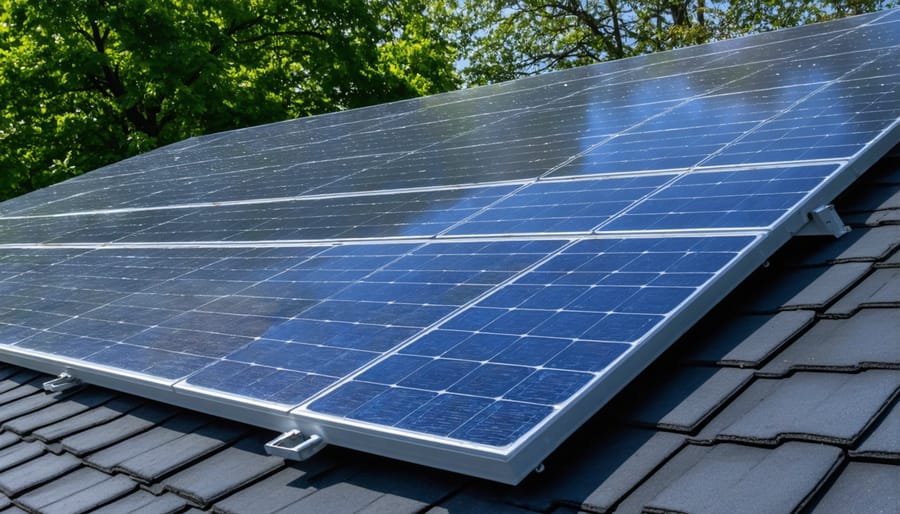
Fall and Winter: Recovery and Planning
As summer heat fades and temperatures drop, it’s the perfect time to give your solar panels a thorough once-over. Start by clearing away any fallen leaves, branches, or debris that accumulated during autumn—these can trap moisture and create shading problems when spring arrives. This is also your opportunity to inspect for any heat-related damage from the summer months, like cracked seals or loose mounting hardware that thermal expansion might have affected.
Schedule a professional inspection if you noticed any performance dips during the hot season. Technicians can identify issues like failing cooling components or ventilation problems that need addressing before next summer. Consider this your planning window for any upgrades you’ve been contemplating—whether that’s adding reflective roofing, improving airflow beneath panels, or installing monitoring equipment to track temperature impacts.
Think of fall and winter as your preparation season. The work you do now directly translates to better energy production and savings when temperatures climb again. Plus, addressing issues during the off-season often means better contractor availability and potentially lower service costs. Document your panel’s condition with photos and performance data—this baseline helps you measure improvements and catch problems early next year.
Monthly Quick Checks Anyone Can Do
Spending just 10 minutes each month can help you catch cooling issues before they impact your energy savings. Start with a visual walkthrough—look for leaves, debris, or bird droppings that could trap heat against your panels. Check that nothing’s casting new shadows from growing trees or recently installed structures.
Next, peek at your monitoring app or inverter display. Compare this month’s output to the same month last year. A sudden 10-15% drop could signal overheating or other issues worth investigating.
Finally, give panels a quick rinse with your garden hose during cooler morning hours if you notice visible dirt buildup. This simple step removes dust that absorbs heat and blocks sunlight—a win-win for cooling and efficiency. No need for special equipment or climbing on the roof; ground-level inspection works perfectly fine. If something seems off during your check, that’s when it’s time to call in the professionals.
Warning Signs Your Cooling System Needs Attention
Your solar panels are designed to work reliably for decades, but keeping an eye out for a few simple warning signs can help you maintain peak performance and protect your investment. The good news? Most issues are easy to spot and address before they become costly problems.
**Unexpected Drops in Energy Production**
If you notice your energy bills creeping up or your solar app showing lower-than-normal output during sunny weather, your panels may be running too hot. A sudden 10-15% drop in efficiency compared to similar days last month is worth investigating. This doesn’t mean panic—it often just signals that it’s time for a cleaning or a quick system check.
**Visible Hot Spots on Your Panels**
During a visual inspection from the ground, look for discolored areas or sections that appear darker than others. These hot spots indicate localized overheating and reduced performance in those cells. While you shouldn’t climb on your roof, binoculars can help you spot these issues safely from ground level.
**Unusual Sounds from Cooling Fans**
If you’ve installed active cooling systems with fans, listen for grinding, rattling, or louder-than-normal operation. These sounds often mean a fan is working harder than it should or needs maintenance—catching this early prevents complete failure during peak summer months.
**Water Leaks or Moisture Issues**
For systems using water-based cooling, check for puddles, drips, or moisture around connections. Even small leaks waste water and reduce cooling effectiveness, but they’re typically simple fixes when caught early.
The key is staying observant without worrying unnecessarily. Regular monthly visual checks take just five minutes and can save you from bigger headaches down the road.
When to Call a Professional vs. DIY Maintenance
Most cooling-related maintenance is surprisingly simple and safe for homeowners to handle. Regular tasks like cleaning panels, checking for debris, and visual inspections are all DIY-friendly activities that protect your investment and keep your system running efficiently. These simple maintenance steps require no special skills—just a soft brush, water, and attention to safety when working near your roof.
However, certain situations absolutely require professional expertise. Always call a certified technician for electrical work, inverter issues, or any repairs involving wiring connections. If you’re considering installing cooling fans, water systems, or making structural modifications for better airflow, professional installation ensures everything works correctly and safely. Additionally, roof-mounted equipment should be handled by professionals to prevent accidents and property damage.
Here’s the golden rule: if it involves electricity, structural changes, or climbing high on your roof, contact a professional. Before attempting any maintenance, review your solar panel agreement—some manufacturers require professional servicing to maintain warranty protection. DIY tasks that void warranties can cost you thousands in lost coverage.
The good news? Most homeowners can easily handle routine cleaning and visual checks that keep panels cool and efficient. Save money on basic upkeep, but invest in professionals when safety or technical expertise matters. This balanced approach maximizes your solar savings while protecting both your system and yourself.
Keeping your solar panels cool doesn’t require expensive equipment or complicated routines. Simple preventive maintenance—regular cleaning, ensuring proper airflow, and monitoring performance—goes a long way in protecting your investment and maximizing your energy savings. When your panels operate at optimal temperatures, they generate more electricity, which translates directly to lower utility bills and faster payback on your initial investment.
The good news? Most cooling maintenance tasks are straightforward enough for any homeowner to handle. A quarterly cleaning schedule, visual inspections for debris or shading issues, and keeping an eye on your monitoring system can prevent most temperature-related efficiency losses. For more complex concerns like ventilation improvements or performance troubleshooting, professional assessments provide peace of mind and expert solutions.
Your solar panels represent a significant investment in your home’s future and the environment. Don’t let easily preventable heat issues compromise the returns you were promised. Take the next step today—schedule a professional inspection to assess your system’s cooling efficiency and identify any optimization opportunities. Your wallet and the planet will thank you.

